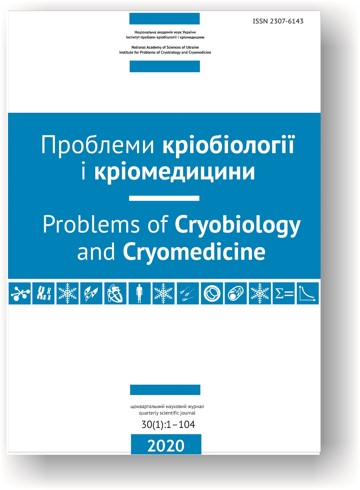Intravenous Injection of Embryonic Neural Cells to Rats with Chronic Alcohol Poisoning
Keywords:
embryonic neural cells, cryopreservation, transplantation, intravenous injection, chronic alcohol poisoning, model, rat females, liverAbstract
The problem of correcting the consequences of chronic alcoholic poisoning was studied. The efficiency of intravenous injection of embryonic neural cells (ENCs) to correct the consequences of chronic alcoholic poisoning even at the background of continued alcohol intake in small doses was found out. An intravenous introduction of cryopreserved human ENCs to rats was shown as causing no negative effect on intact animals. In the model of chronic alcohol poisoning the ENCs injection was demonstrated to result in the improvement of an organism’s general state and functional state of liver: it decreased the prothrombin time, hexenal sleep and increased albumin content in blood plasm.
Downloads
Published
How to Cite
Issue
Section
License
Copyright (c) 2020 A. Yu. Petrenko, G. A. Kovalev, V. I. Grischenko

This work is licensed under a Creative Commons Attribution 4.0 International License.
Authors who publish with this journal agree to the following terms:
- Authors retain copyright and grant the journal right of first publication with the work simultaneously licensed under a Creative Commons Attribution License that allows others to share the work with an acknowledgement of the work's authorship and initial publication in this journal.
- Authors are able to enter into separate, additional contractual arrangements for the non-exclusive distribution of the journal's published version of the work (e.g., post it to an institutional repository or publish it in a book), with an acknowledgement of its initial publication in this journal.
- Authors are permitted and encouraged to post their work online (e.g., in institutional repositories or on their website) prior to and during the submission process, as it can lead to productive exchanges, as well as earlier and greater citation of published work (See The Effect of Open Access).



